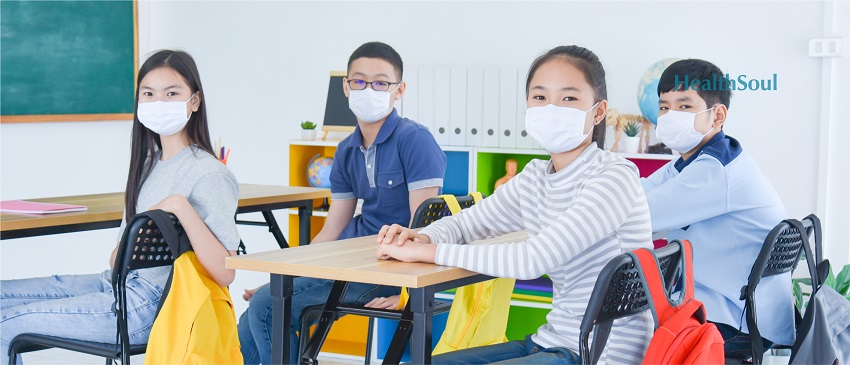Pieces of Advice on How to Prevent Flu in Schools

Widespread flu is a common annual phenomenon, but the seasons are mostly unpredictable in many ways. For instance, in the US, the timing of respiratory infections varies, peaking between the colder months of December and March. It becomes more complicated since the viruses spread quickly when an infected individual either coughs or sneezes.
Since congested areas like schools are high-risk environments, proper strategies should be put in place to ensure students are healthy and in the right state of mind.

How to Prevent the Flu Virus from Interfering with Learning
Here are the effective strategies to follow if you wish to keep your students healthy and in class:
Get Students Vaccinated
The most reliable preventative step to take to keep your students safe would be to get them vaccinated. You will have to wait for about two weeks before the vaccine becomes effective. Therefore, ensure you protect them early before the flu season or before the illness spreads to your community.
The best time to begin the vaccination is between September and October. Even if you do not get the process done on time, ensure your learners are immunized. The vaccine is available at your nearest health facility, in pharmacies, city health departments, and walk-in clinics.
Emphasize on Regular Hand Washing
Another effective way to keep your learners safe from flu infections is by encouraging them to avoid close contact. But this cannot be easy to achieve in a crowded learning environment.
In this case, the best thing would be to encourage them to wash their hands with soap and water regularly. Also, teachers should help them learn to ignore the itch to touch their faces. On this note, you can also acquire some wonderful hand sanitizers, preferably 60% alcohol. Teachers can place these at the entrance of each classroom and have their own pieces in their bags.
According to a recent study, proper respiratory hygiene and the use of sanitizers lowered absentee rates by up to 26 percent. It also reduced the confirmed cases of influenza A infection by about 52%. Therefore, teachers need to ensure they incorporate regular hand washing in learning schedules. This way, students will not have to miss class sessions or seek ‘write my essay online’ services due to homework hardships.
Disinfection of High Touch Areas
Students, teachers, and other staff can be safe from flu if all frequently touched areas are disinfected regularly. Areas that require the most considerable attention include computer keyboards, doorknobs, faucets, and countertops. Other sections of the learning facility that should be addressed are the cafeteria and athletic areas. All these can be done effectively if the school hires a professional cleaning service provider.
Educate Students on the Precautionary Steps
Students should be taught all the sights and symptoms of the flu virus, any warning sign, and high-risk areas. If a learner or teacher gets the symptoms, they should be allowed to go home and get treatment. They need to wait for at least a day after they realize the signs and fever are no longer available.
Ailing scholars and tutors should be separated from the rest of the population until they are ready to leave for home. Fortunately, most institutions have sick rooms where patients can get the necessary care as they await the next steps. If health professionals have given them an antiviral medication, the patients should be encouraged to complete their treatment processes.

